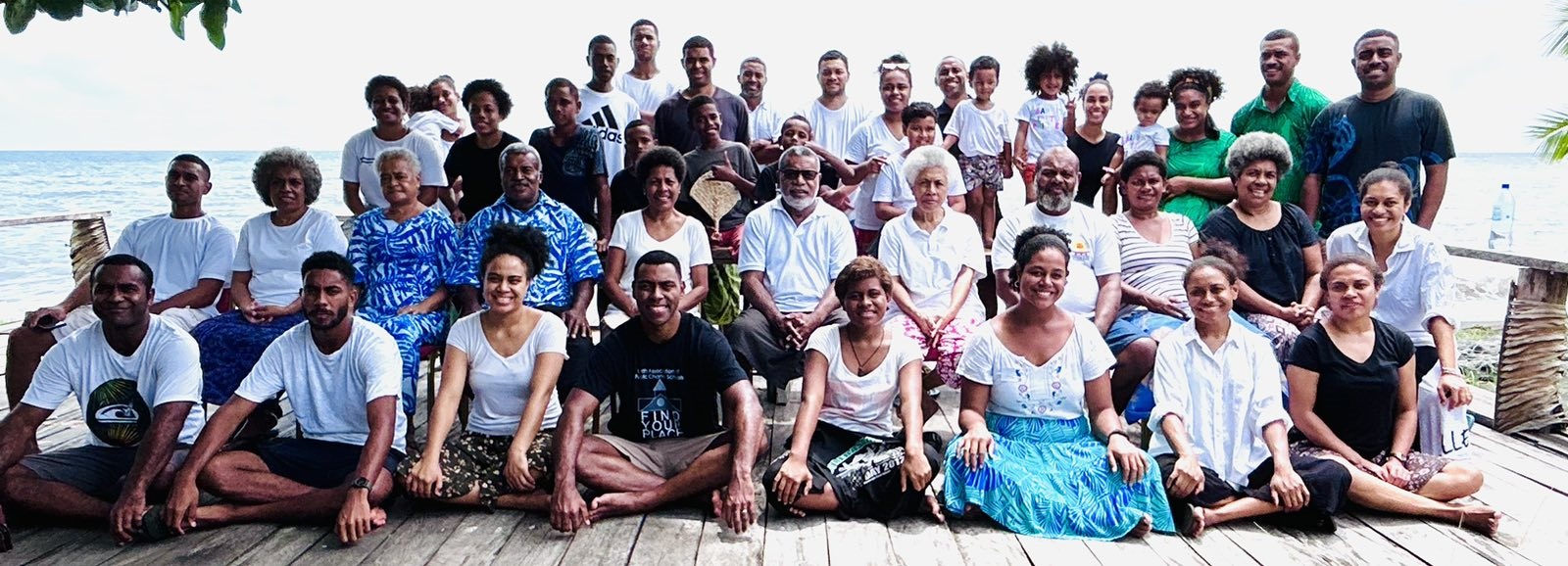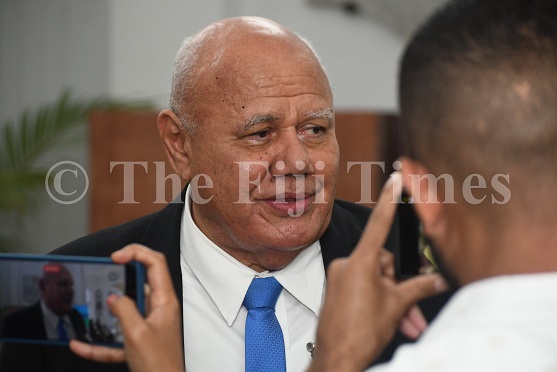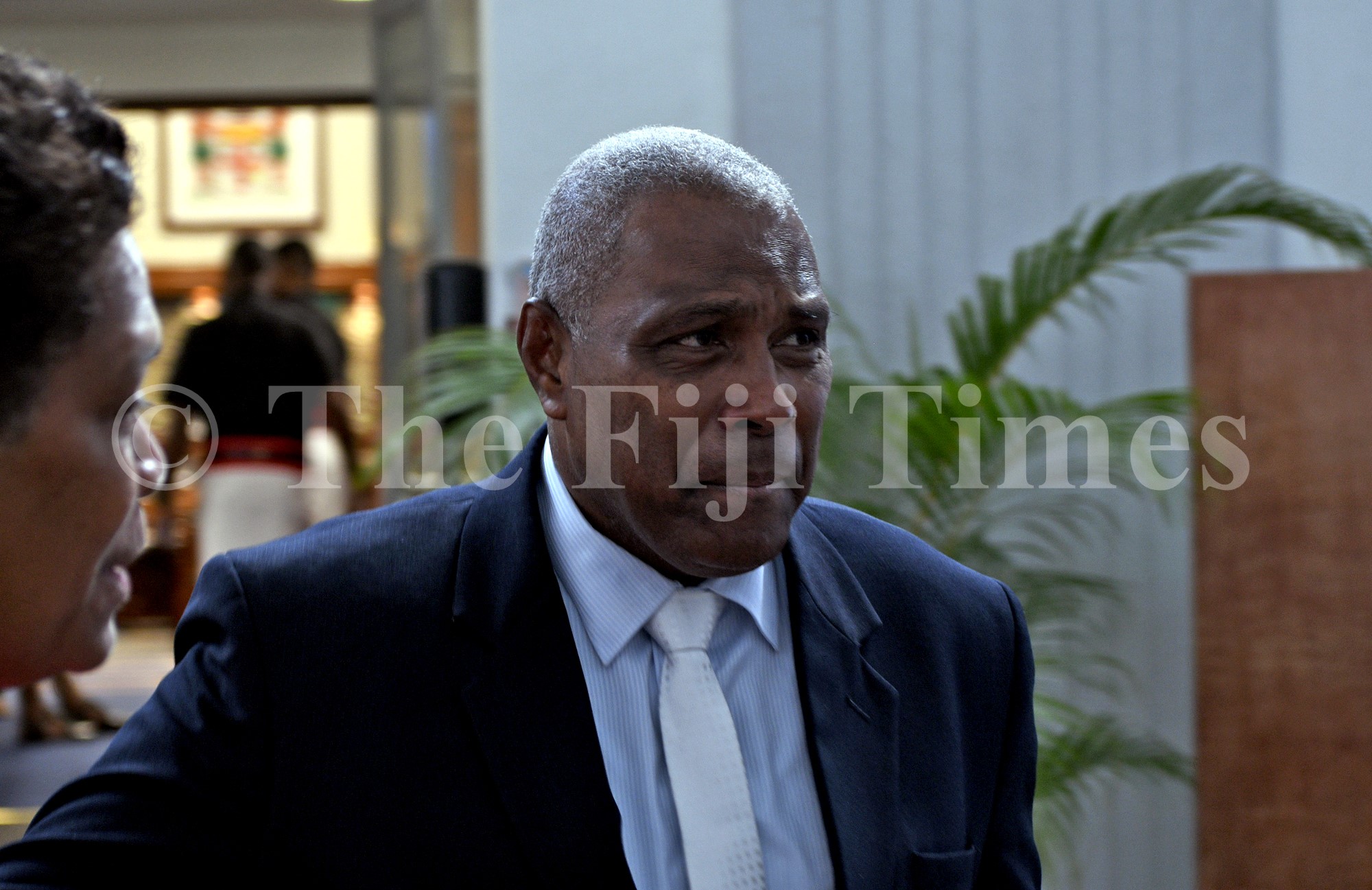On paper, the ambitious, youth-led project called Maroroi Dreketi says it would focus on implementing four key project components including flood mitigation, food security, planting native trees and creating a disaster risk reduction plan.
But Navotu Youth president Kinijoji and his youth club of 28 young men and women from a small mataqali in Rewa had more ambitious goals in mind. Their vision was to help create an active and vibrant youth community and remove lethargic attitudes and behaviours.
“When the turaga ni koro (village headman) calls for cakacaka vakoro (village communal activities), only three or four people would turn up and the rest would go their own way,” said Kinijoji.
“We are always hearing our elders reminiscing how clean their villages used to be, so we are wondering what went wrong that has brought it down to the standard it’s in today.”
The youths belong to the mataqali Navotu in Vunisinu village, in the tikina of Dreketi in Rewa. For some time they had been concerned about the attitude slowly seeping into village life as many lose interest in their traditional obligations to the vanua and disrespect elders and traditional leaders.

So, the project was designed to help youths and their peers take ownership of their obligations to the vanua, which would last beyond the project funding. The project is funded by the Global Environment Facility Small Grants Programme (GEF SGP), but implemented by the United Nations Development Programme (UNDP).
It focuses on implementing a climate-smart adaption initiative focused on improving drainage to address flooding, exacerbated by climate change in recent years. Flooding is where they started. The tikina is always at the brunt of flooding and seawater intrusion, particularly during storms.
“We live close to the sea and have seen our crops affected by salt water, especially via (giant taro), which is our staple food,”Kinijoji said.
But climate change is only one aspect of the issue. As the call by the vanua is ignored, the villagers are neglecting the maintenance of government-built drains and the channels within the mangroves that were once crucial for boat travel.
So the waterways gets blocked and floods the village, particularly, at high tide.
“We cannot relocate because our tikina does not own much land and whatever happens in one village affects the rest of the villages within the tikina. So, we targeted trying to mitigate the flooding in all five villages. We started first with consultations in the five villages to hear firsthand what causes the flooding and what they think can be done,” said Kinijoji.

“We had also set aside some funding for the digging of the drains and waterways, so at the consultation, when we asked whether to pay a contractor to clear the drains or give it to the villagers, they said they wanted to be paid to do it,” he said, laughing.
“We then bought a brush cutter, knives and files for each village and they were also paid for the work done. We found out that what caused the high tide flooding was overgrown para grass in the drains and all they did was to cut them and clear the drains. So today there is basically no more flooding in Vunisinu, Nabuli all the way to Nakorovou. However, the villagers were forewarned by the turaga ni vanua of the leading village of Vunisinu in Dreketi that the funding would run out.
“Are they doing this because they are being paid? Yes, but on the last day of the consultation, they were asked by the turaga ni vanua of the leading village: What will replace the head of the king (money); what will replace money when funding runs out?” explained Kinijoji.
“The turaga ni vanua said we need to create a spark in people so that they take ownership as we cannot expect outsiders or government to come and clean it for us because it has been a few years now since the government came and cleared the drains, so we have to deal with it, ourselves.
“And this is what our youth group is trying to do – getting our youths in the district together – because we are trying to get people of these villages to take ownership of what they are supposed to do,” Kinijoji said.
“Especially the cakacaka vakoro (communal work) and we have now seen a change when the turaga ni koro calls, 30 to 40 people turn up unlike the 3 or 4 who used to heed his call before.”
UNDP GEF Small Grants Programme national coordinator, Akisi Bolabola said the Maroroi Dreketi project is an exemplary youth initiative that’s taken a holistic approach to implement climate smart adaptation strategies.

“Since the start of the project, the youth group from Vunisinu village has been instrumental in sharing their stories with other communities and stakeholders, also fostering some key partnerships. GEF SGP awarded funding of $35US,000 ($F78,000) to Navotu Youth Club in 2022 with completion date at end of 2023,” she said.
For food security the Navotu youths are working on having raised beds to plant their crops because most of their land is affected by flooding and seawater intrusion.
“Nowadays people go to town and return with vegetables which they could have planted at home. We want to change their thinking as to what they could plant,” said Kinijoji.
“We have a greenhouse in which we grow seedlings for tomatoes, capsicum, cucumbers and other vegetables. The villagers will just ask the turaga ni koro for what they need, and we supply them.”
As part of the project, the Navotu youths are to plant 1000 native trees and remove invasive tree species. So far 700 trees have been planted through seedlings supplied by government. Villagers, who want to plant trees make a request to their turaga ni koro, who contacts the youth group for supplies.
“The tree seedlings are given for free by the Ministry of Forests in Coloisuva and we are encouraging them to plant native trees and fruit trees as well.”
For the last component of the project, the Navotu Youth Club created a Disaster Risk Reduction plan for the tikina of Dreketi after consultation among the five villages in the district. In designing the plan, brought up was a fire in Nadoria Village that razed five houses to the ground.

The problem was there was no water because water was only available at certain hours of the day. The fire happened at midnight when it was closed.
“We had water around us but could not douse the fire! In our consultation some said we needed fire hydrants in all villages, but the water supply was irregular. The solution is to use the water pumps that we draw water from for our pig pens,” said Kinijoji.
For their evacuation plan, village halls or churches, which are the biggest buildings within the community, serve as evacuation centres. The buildings need improvement to provide distinct accommodations for mothers and children, separate from those designated for men. However, it does not end there. Villagers have been inspired to improve waste management through a healthy competition as waste is a big problem.
“We want to eradicate waste in our tikina because we want to build up healthy people with healthy habits. We have collected and sorted our wastes in the five villages – plastics, tins, and those that needs to be recycled or incinerated,” said Kinijoji.
“It’s a different scene now as villagers are competing as to who will have the biggest weight of rubbish. We will compare the weight in December, and we have prizes for those with the least weight.

“We are trying to help build up people who are well-mannered, with clean habits, respectful to their elders as well as trying to make our elders understand the roles of youths and women in the community and that they be given the chance to also have a say in decision making.”
And their youths are now involved in the new change. “It seems like a breath of fresh air that youths are on the move — some are trying to get registered, revive their groups and some are applying for youth work. These are the leaders of tomorrow and we have found that we are not only implementing the four project components but building up individuals as well,” said Kinijoji.
• ALUMECI NAKEKE is the communications officer at cChange, a communications nonprofit that creates social good through innovations in communications.






